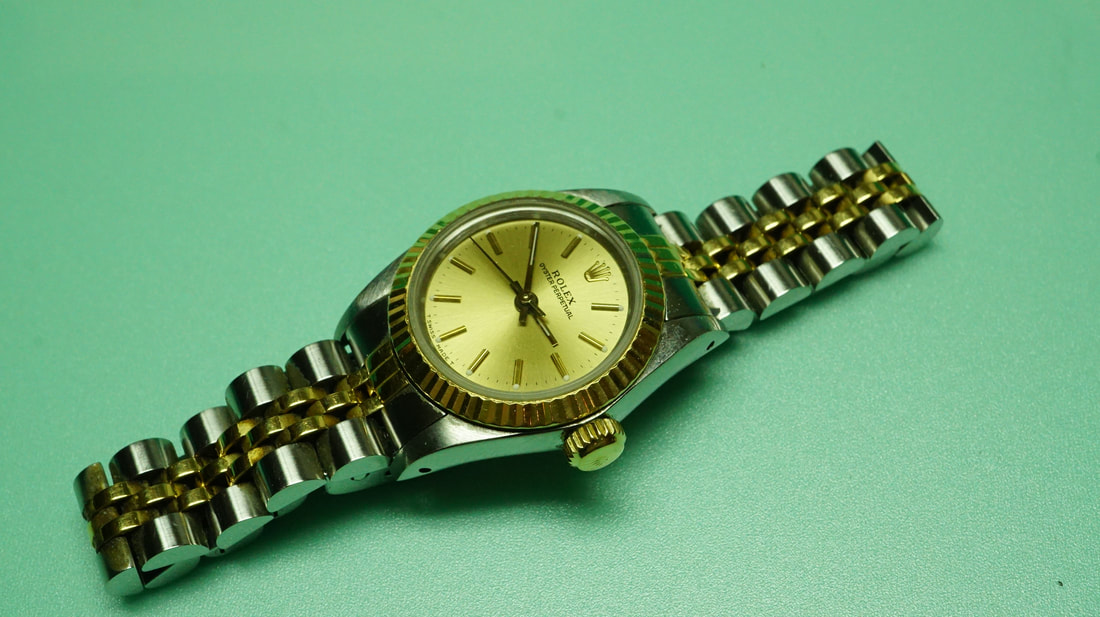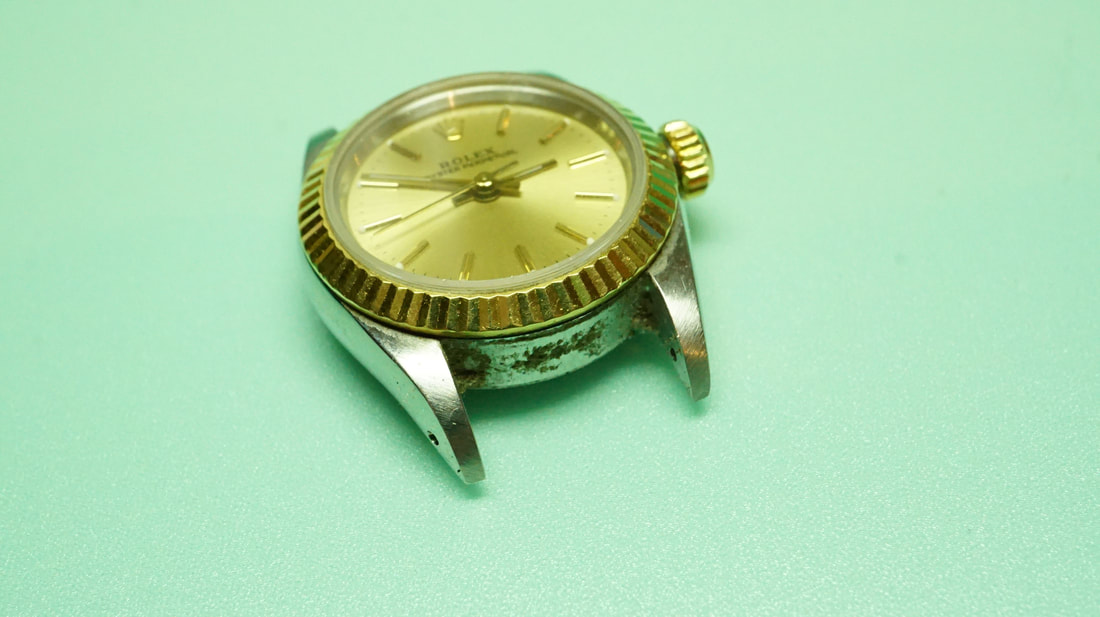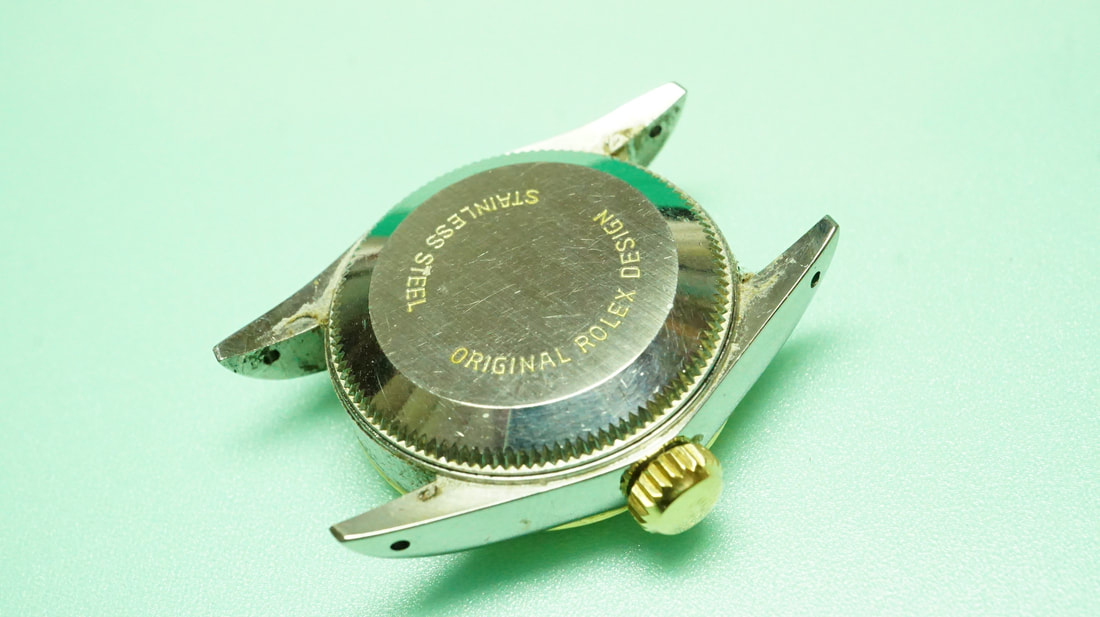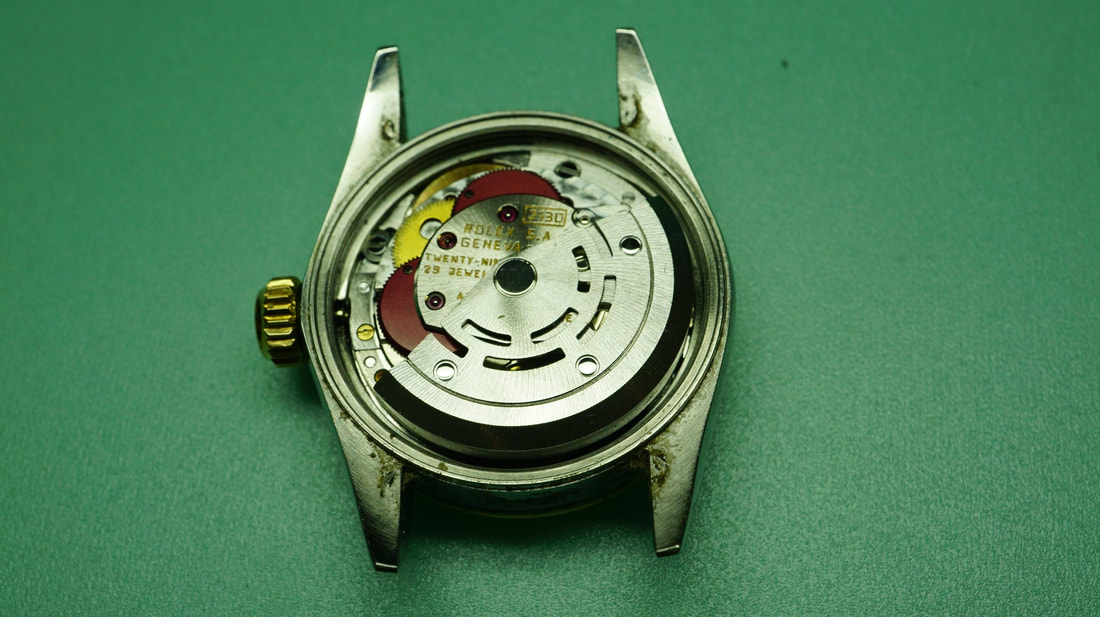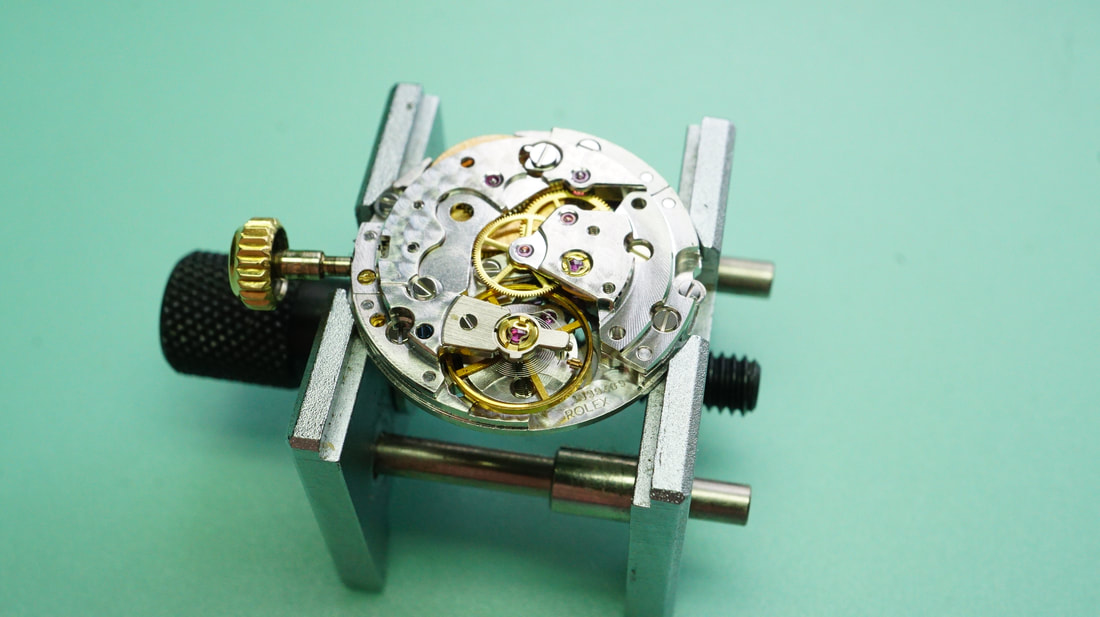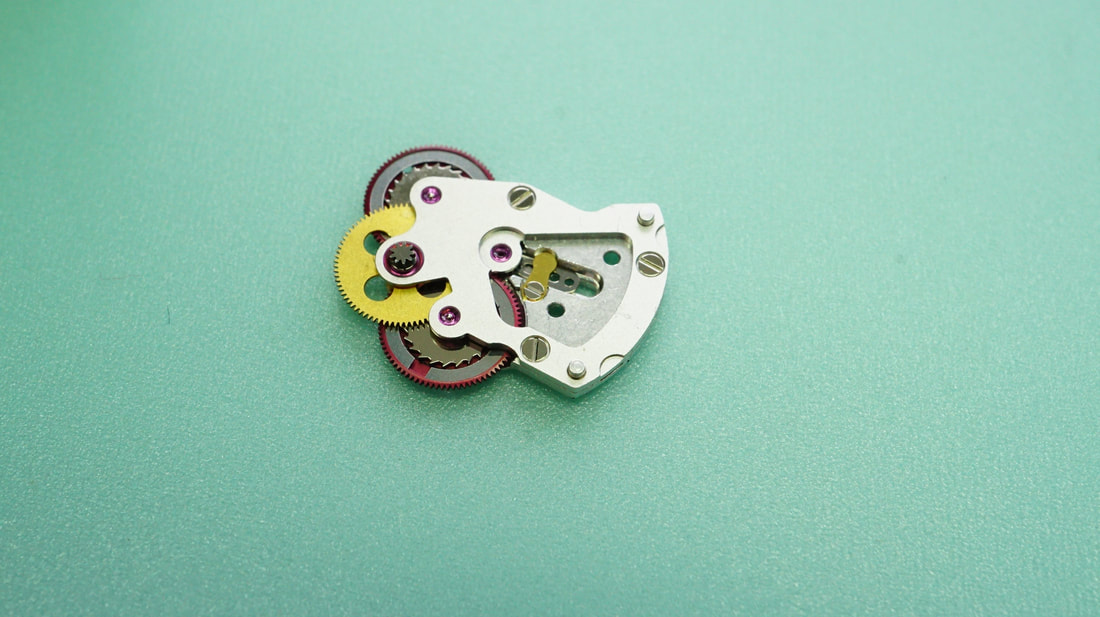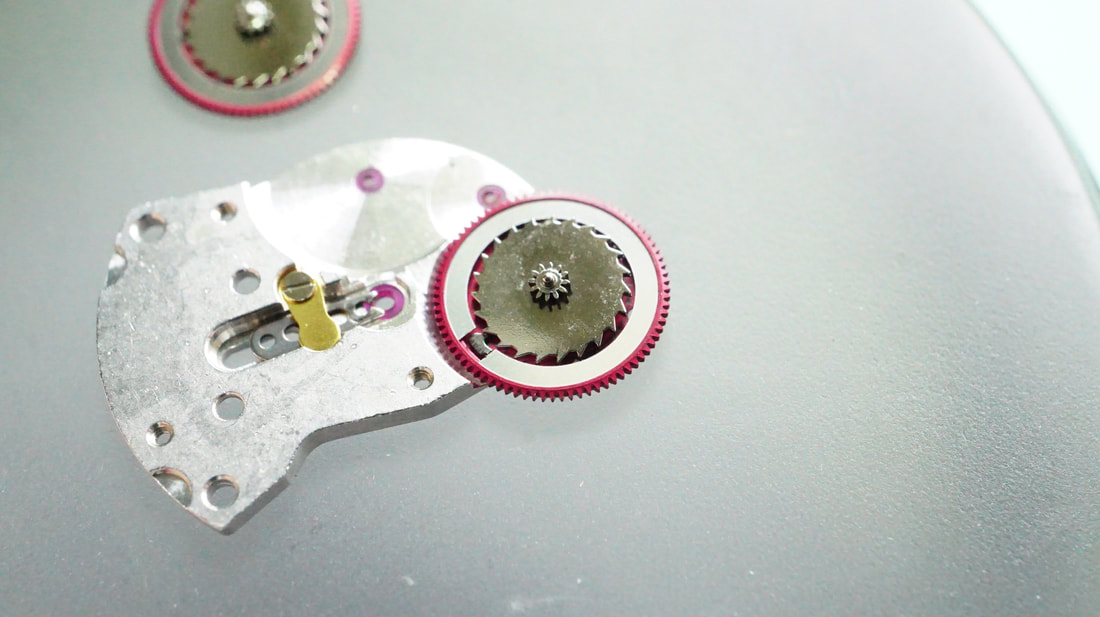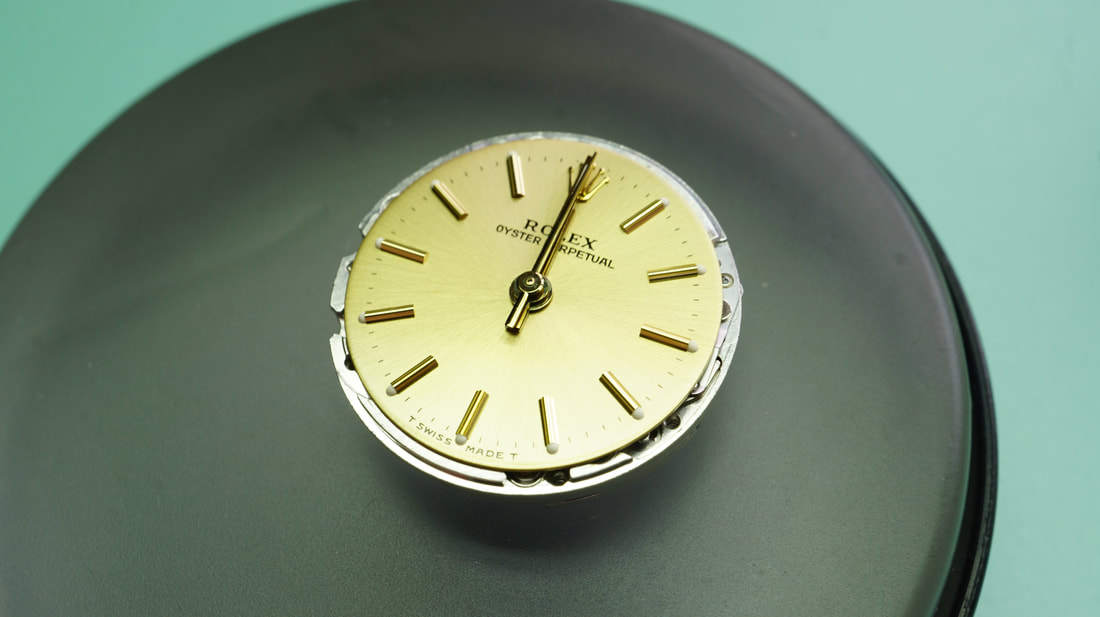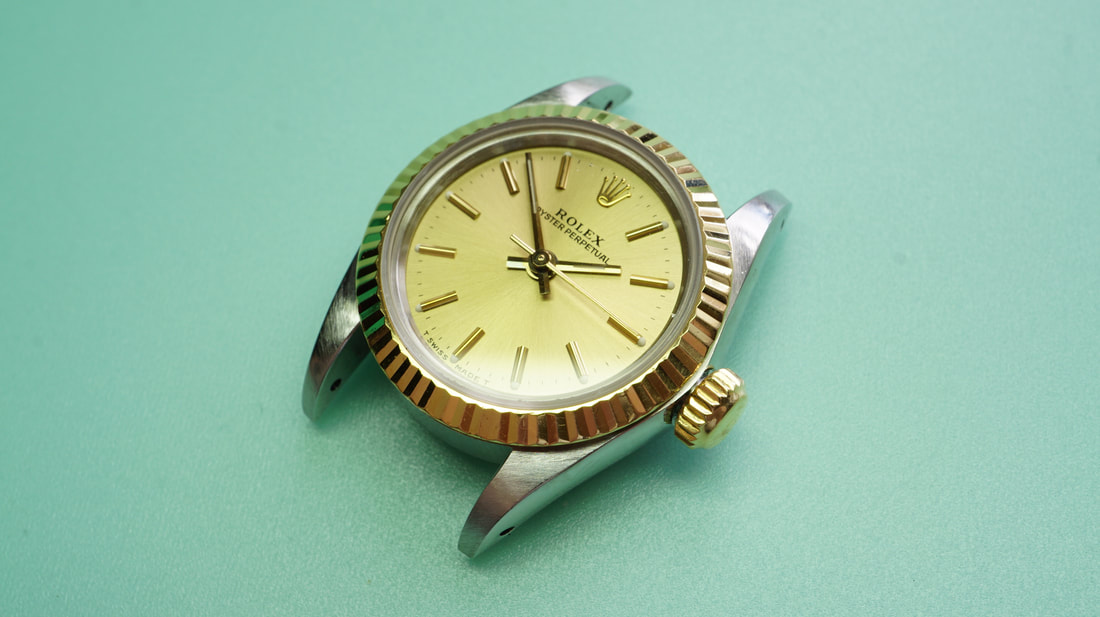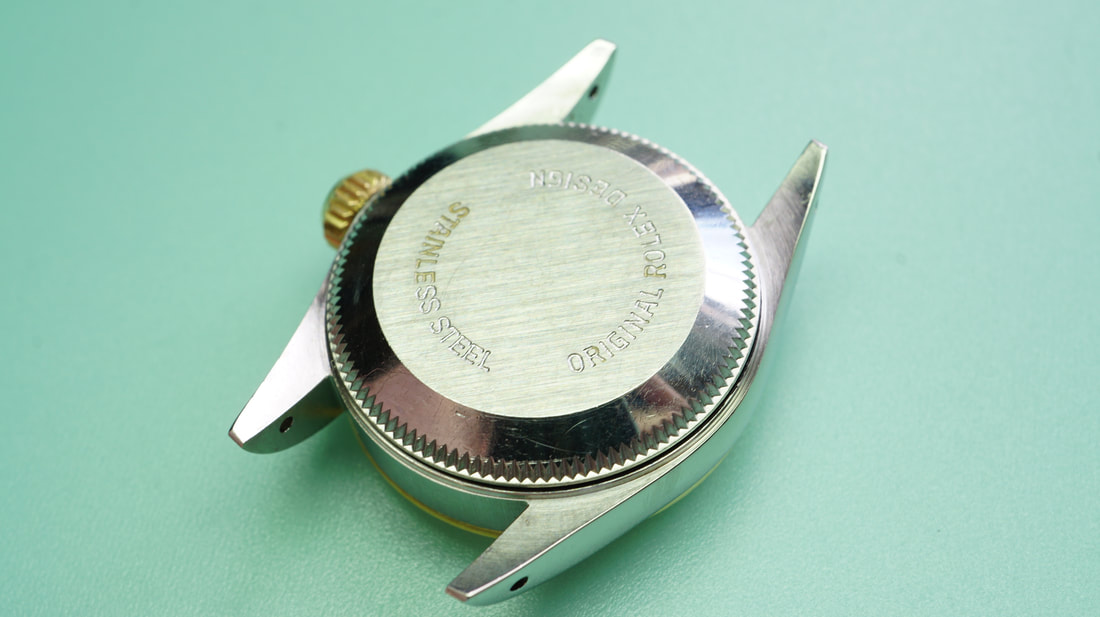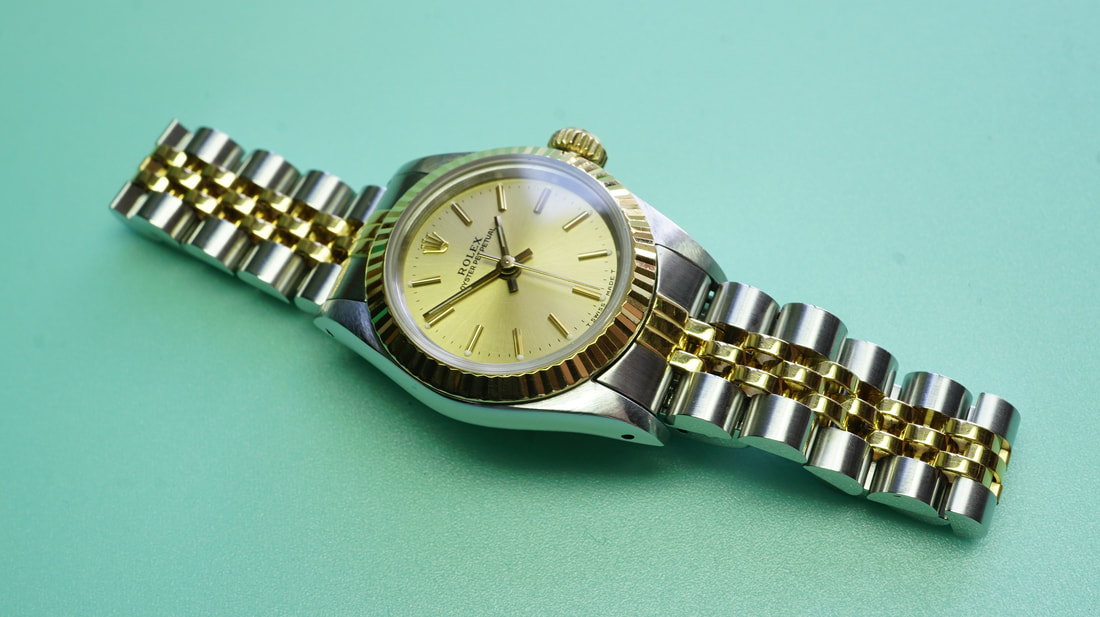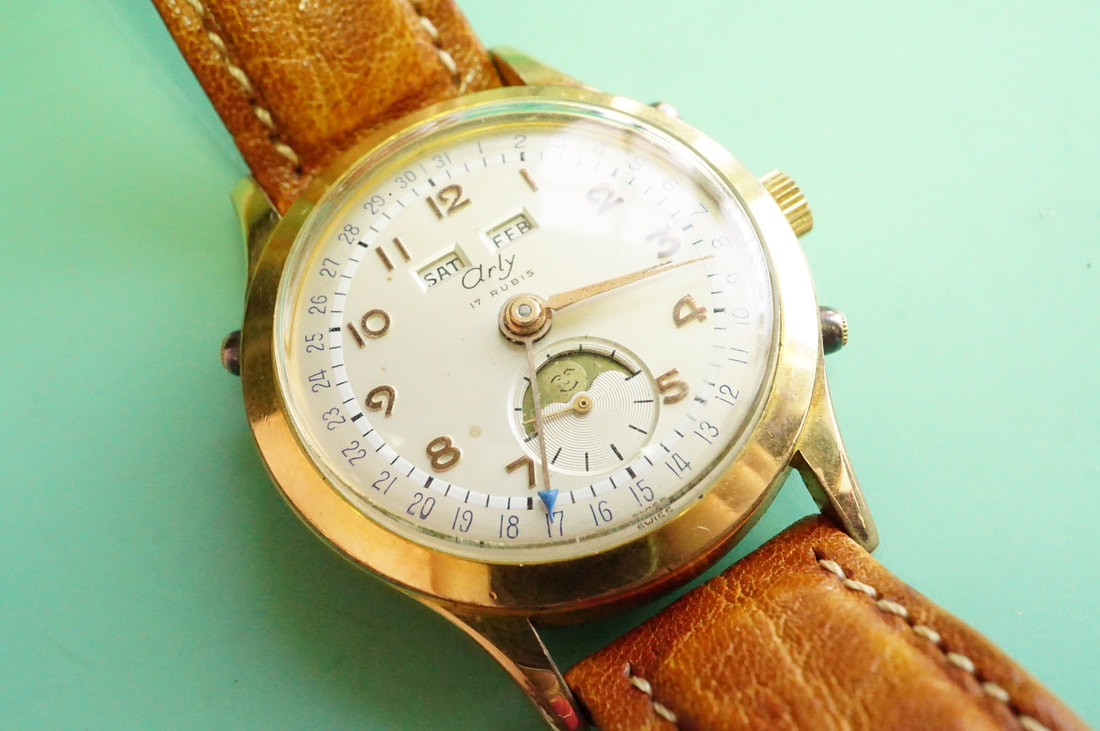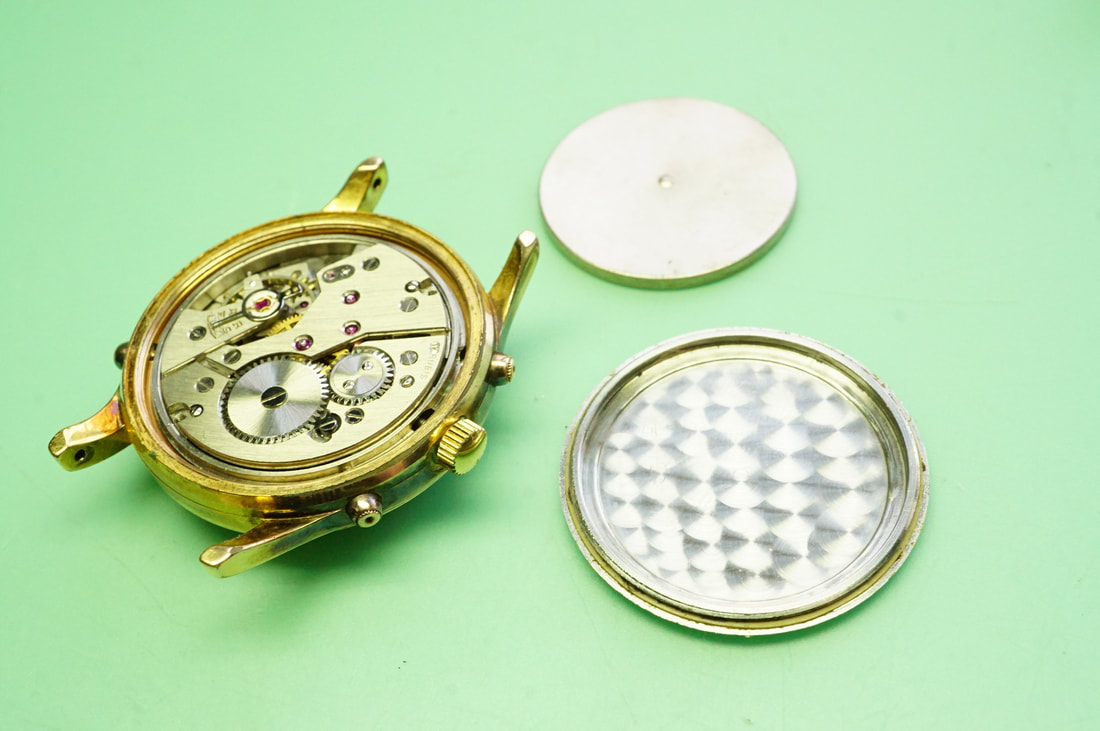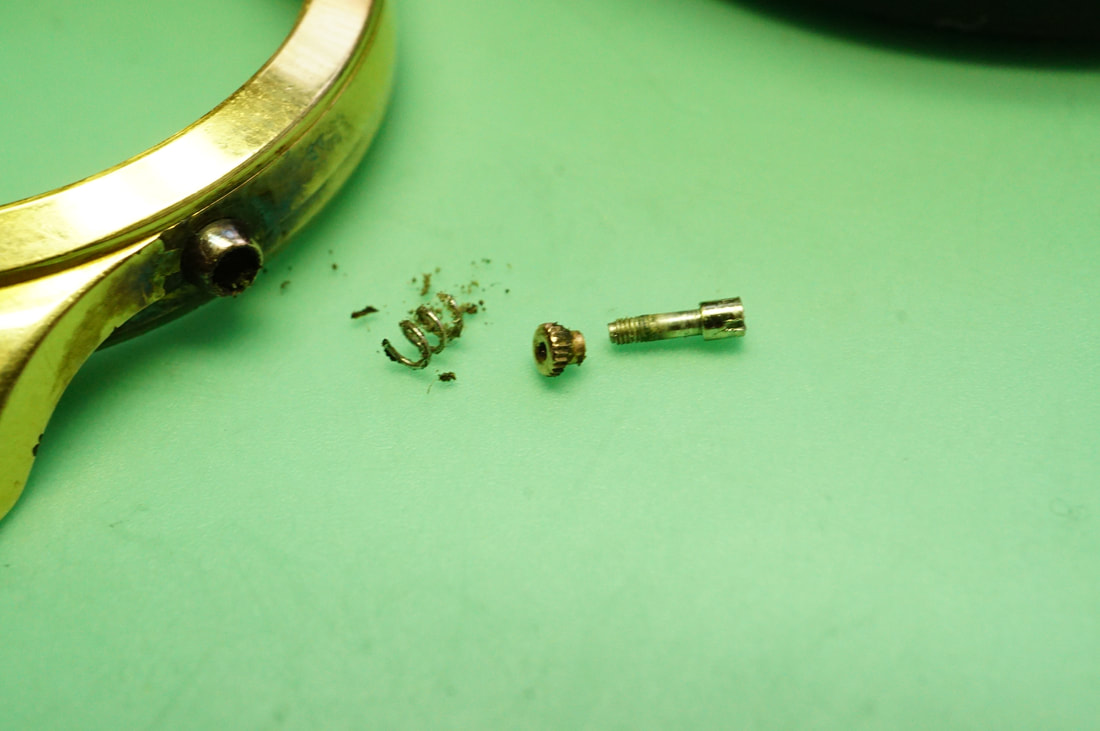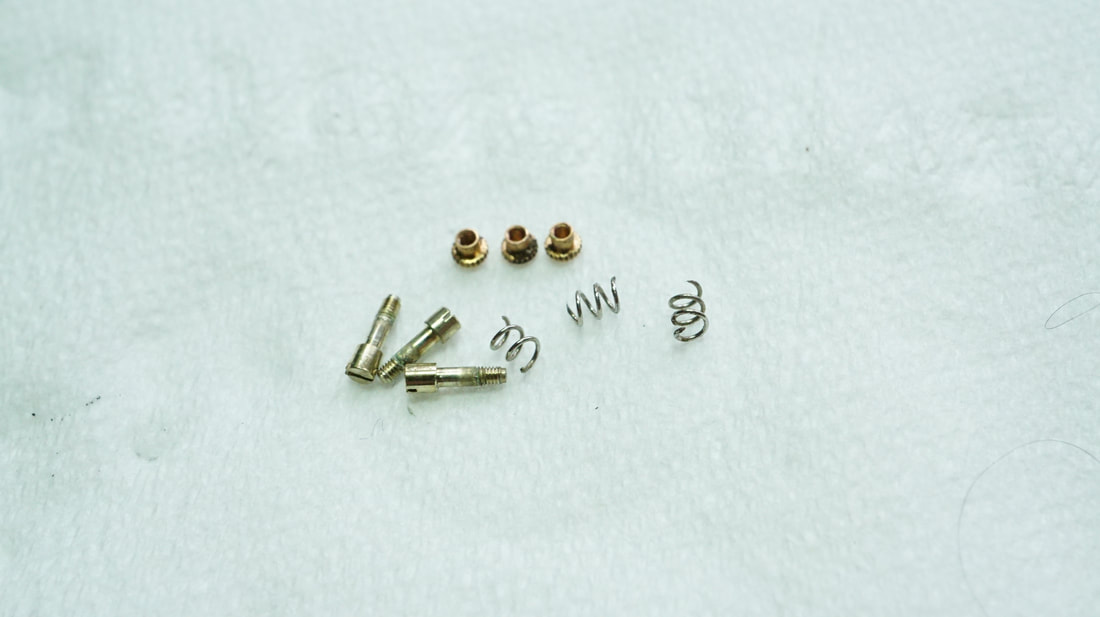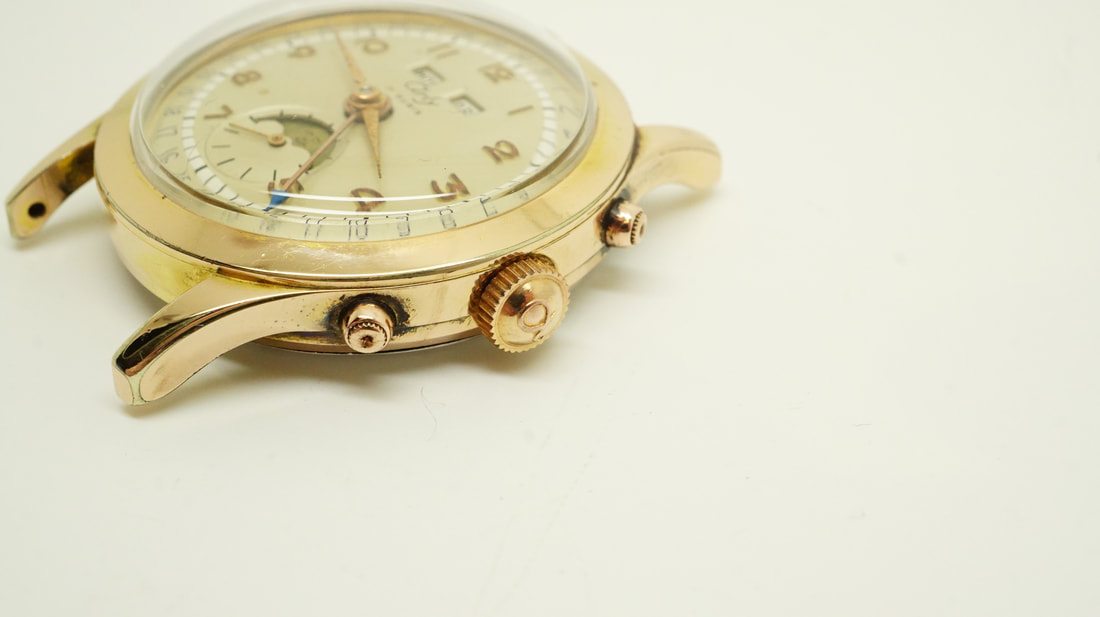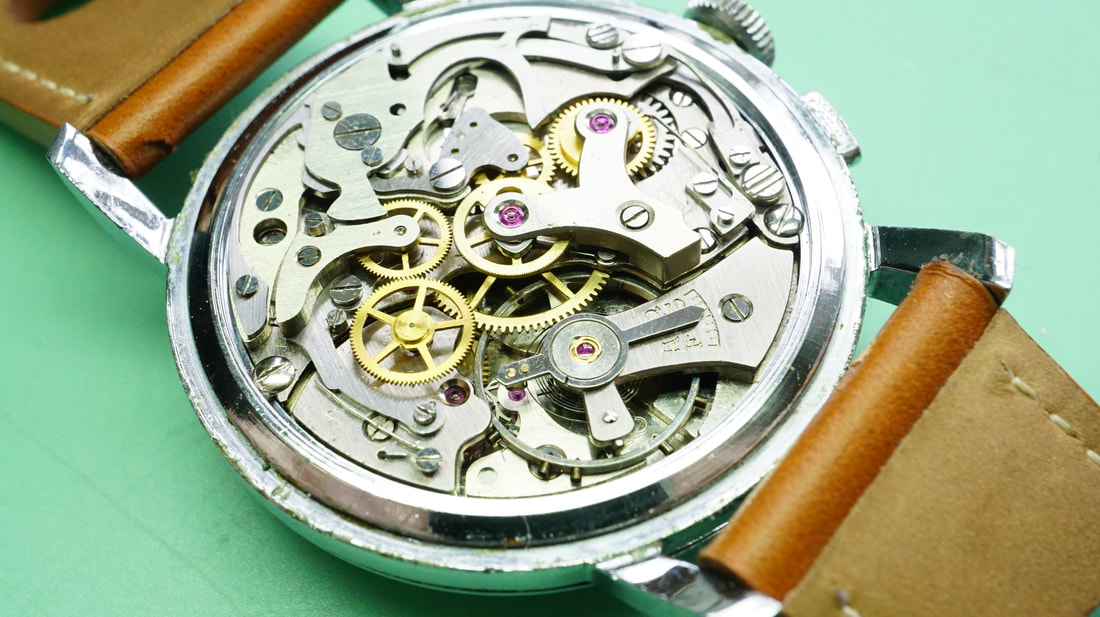|
Today we take a look at a classic Rolex Oyster Perpetual, a brand and model so well known that even those who are not " into " watches will know, and probably love. This particular model features a calibre 2030, all the song and dance of its bigger brother but contained within a smaller vessel, but they say good things come in small packages. Let's start with getting that bracelet off and getting the cosmetics cleaned up... Prior to removing the movement it was clear that the winding was not correct, there was no smooth turn when powering the movement and setting the hands was very loose and without the clean snap that should be there. Time to break down the movement and see what has gone on.... With the movement stripped and cleaned it could then be reassembled carefully ensuring every part is thoroughly inspected. Aside from a few minor hard deposits the movement came together without much issue, there was a slight beat error but this was swiftly corrected by adjusting the carrier before tightening down. The casing sides and bracelet were given a slightly clean up on the bench polisher and then ultrasonically cleaned before the whole watch was put back together ready for final testing. Whether your a Rolex fan or not you can not take away from the fact that every ounce of effort goes into making it the very best it can be, this little gem will have a new owner soon and no doubt it will be treasured. With my work done its time to say good bye :) If you enjoy these blogs then do come back as i try to update with new and interesting pieces as often as i get spare time for :)
0 Comments
A few weeks ago now i had this stunning IWC Pilots watch in for service featuring the 37526 movement calibre ( ETA 298X Base ), this is a unique piece and one worth mentioning here in a little detail. Although the main bulk of the movement is ETA based, the upper 24 hour/Date section is one developed by IWC for this specific model. Creating your own addition to an established movement is no small thing but in this case it works well and has since been improved. As we already know a watch tells the time through a motion of gears that have specific ratios, it is these ratios which determine the path of the hands in order to show us the correct time. The rotation of the hour hand is once in 12 hours whilst the minute hand rotates 12 times in the same period. With the 37526 the addition of a 24 hour indication requires the clever use of additional gears in order to display a second time zone. This system is far better explained by the following link ( www.gregsteer.net ) but i add the images for those who want to view the parts were talking about > This system has since been updated to require the use of less parts and remove an issue present with the older sprung 24 wheel. The new design is far less prone to wear and so likely keep the watch running its best for longer. Below are some further photos of the movement during disassembly This watch certainly appeals to those who may travel frequently and want to keep track of time on more than one continent, the technical details are also quite interesting so that link above is worth a good read. The watch service went without issue and timing had been brought back to the green so it has since been returned to its owner for some more travelling. An interesting piece i thought id share :) In recently for a service is this lovely little Arly Triple Date featuring a Venus 203 movement, although running it did require a service to bring it up to date. The watch packs a lot of features for such a small package, day, date, month and a moonphase at 6 O'Clock all cased inside a gold plated case with three pushers for rapid date change. Breaking the watch down for service is a little different as the pushers get in the way of normal removal and foul the dial so careful removal of dial & hands first before stripping the movement. With the movement uncased we can begin to carefully remove the worn pushers and se about cleaning them up. Years of gunk can build up unnoticed quite easily and affect working parts >> With the casing cleaned and the pushers ready the movement could be stripped down and cleaned, the 203 calibre is based on the Venus 180 with an additional date plate and complications added. If you should find yourself in need of parts for a 203 then the base parts of a 180 will work just fine. With the movement cleaned and reassembled timing had improved and the date functions were now much smoother due to the pushers being cleaned out of that gunk. There were a few minor issues but nothing that did not get resolved so it was time to re case the watch with a new glass and send it on home. The original crown had long been replaced but did not look right so was replaced with a signed Alpha crown which looks more fitting to the watch. Still to come we take a brief look at the IWC TCZ movement design based on the ETA 2893, a Tag Carrera in for a service and also a look at a recent Rolex Ladies 2030 calibre :)
In for investigation recently is this rather nice Breitling chronograph, featuring a Venus 188 calibre manual wind movement housed in a steel case with acrylic glass. The watch had apparently stopped working correctly and neither time keeping or the chronograph were functional. Cosmetically the watch was in good shape so all that was needed was some tlc for the movement. Finding the problem was fortunately fairly evident as soon as the watch was opened >> As can be seen in the photo above, the hairspring had somehow managed to get itself in quite a pickle. Carefully removing the balance and sorting out the hairspring was first priority, if the spring could be fixed then we can check the running. With some steady hands i managed to sort out the spring enough to get an initial reading, the timing was ok but needed improvement. The chronograph was not functional and this was due to the runner spring not having enough power to push the runner, this could be resolved once the movement was cleaned and ready for reassembly. So we start by stripping the movement from the casing, in this instance the pushers are mounted on leaf springs rather than needing the screws to be loosened in other more typical chronos of this age. With the movement uncased we can strip it down and prepare it for cleaning. It is important when disassembling these types of movement not to undo any of the eccentric screws for levers as adjusting them later can require more time. With the movement thoroughly cleaned it was time to reassemble and lubricate it whilst correcting the runner spring so the chrono will work once again >> With the movement now running almost back to normal it was time to refit the dial and hands and recase the watch ready for extended testing. Note that the movement is tested prior to recasing for several days but this can not be shown in photos :) The damage to the hairspring was bound to have an effect but fortunately it was not enough to ruin the timing for daily use, the chrono spring also was not so far gone it could not be bent back to shape. With everything completed and running well again it was time to say good bye and send her home, hopefully the watch will see many more years of action before needing attention again ! Still to come...... Arly Triple Date.... Quick Look at the IWC TCZ......Rotary Aquaplunge Double Trouble.. |
Archives
July 2021
Categories |

